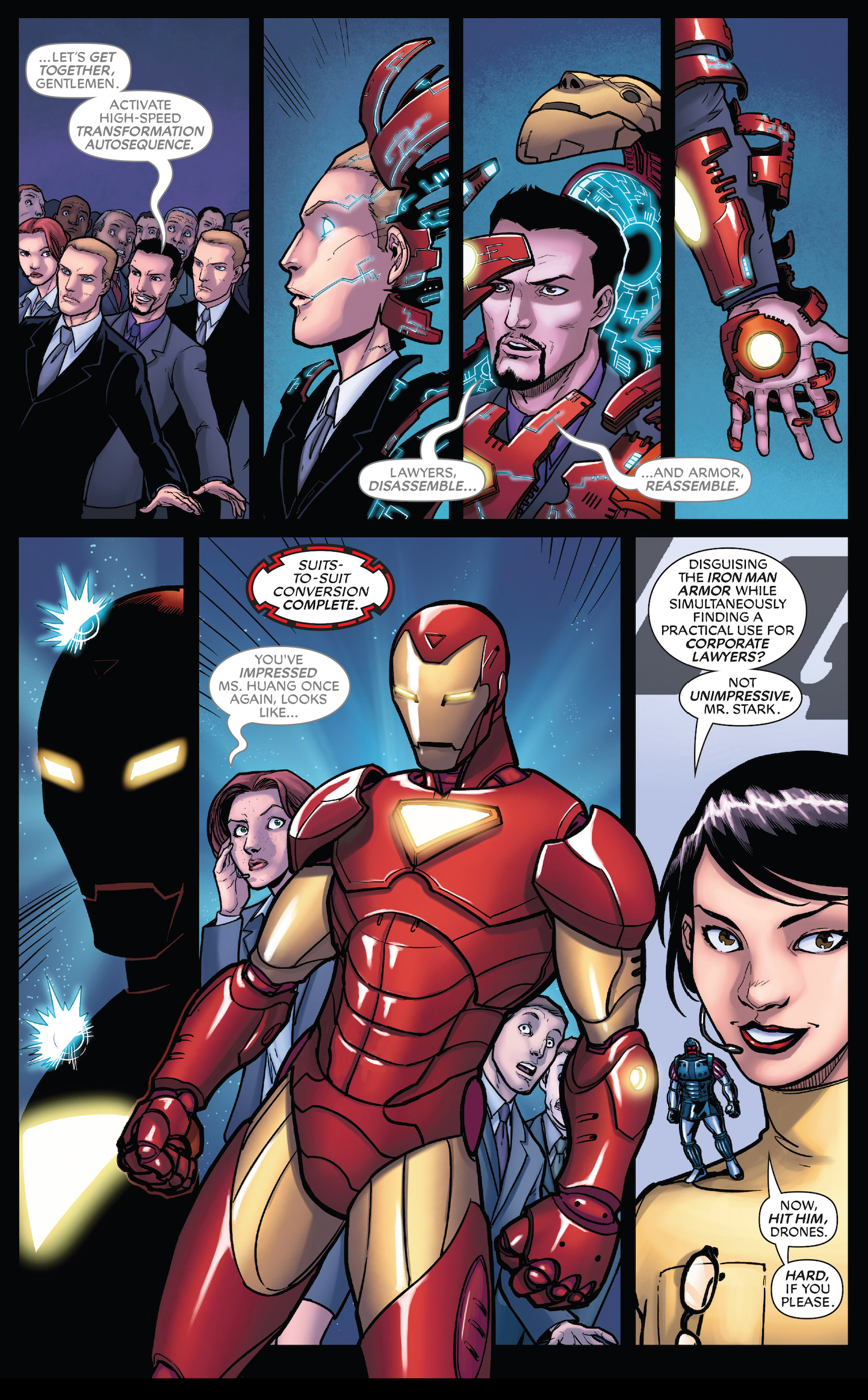
Marvel's Iron Man is one of the smartest characters in the Marvel Universe - and he's also one of the shrewdest businessmen on Earth, so it's no surprise that the genius, billionaire, playboy-philanthropist would quite literally invent a lawyer for himself. As the CEO of Stark Industries, Tony is often beset by legal troubles; lawyers accompanying him everywhere he goes would not be seen as out of the ordinary. In the short story collection Iron Man: Titanium, the tale Railguns, Power Ties and Titanium Men, written by Adam Warren with art by Salva Espin and colors by Rachelle Rosenberg, introduces readers to Tony Stark's very own "Lawyer Armor."
At the start of the story, Tony Stark accompanies Pepper Potts (along with bodyguards and lawyers) to a public meeting in a new skyscraper; the young Chief Technological Officer of the company Designed Intelligence, Huang Qiaolian appears ready to announce the company's IPO before dozens of potential investors. Instead, she kidnaps all the attendees and holds them hostage through the use of the Titanium Man: a robot that can also deploy smaller versions of itself. To add insult to injury, Huang Qiaolian isn't from Designed Intelligence at all, but Advanced Idea Mechanics, or A.I.M.
Huang Qiaolin's plan is revealed as she ushers the hostages toward high-speed electromagnetic elevators. They're not elevators; they're mass drivers, designed to launch the cabins into orbit where they'll reenter the atmosphere and land near an A.I.M. ship. But Tony Stark has a plan; he stands in the middle of his two lawyers and initiates a high-speed transformation sequence. The two lawyers disassemble and form around Tony, creating a new armor. "Suits-to suit conversation complete," he says - while Huang stands amazed that Stark was able to find a practical use for corporate lawyers.

Tony Stark is no stranger to hiding his suits in plain sight. The most famous of Tony's concealed armors is the "suitcase armor" popularized in Iron Man 2, but was seen much earlier in the comics. Unlike the film, the suit wasn't disguised as the briefcase; it simply hid Tony's collapsible armor within. The Extremis armor was the logical next step; Tony stored the undersheath of the armor inside his bones, and moved it outside his skin with a mental command.
Thanks to the Lawyer Armor, Tony was able to rescue Pepper Potts and the passengers inside the elevators, destroy the Titanium Man and defeat Huang Qiaolin (who was later revealed to be a Life Model Decoy). Stark's legal troubles worked to his advantage in this instance. Iron Man's reputation for palling around with an entourage allowed one more suit of armor up his sleeve.
from TechCrunch https://ift.tt/3AHyQDt
via IFTTT
Comments
Post a Comment